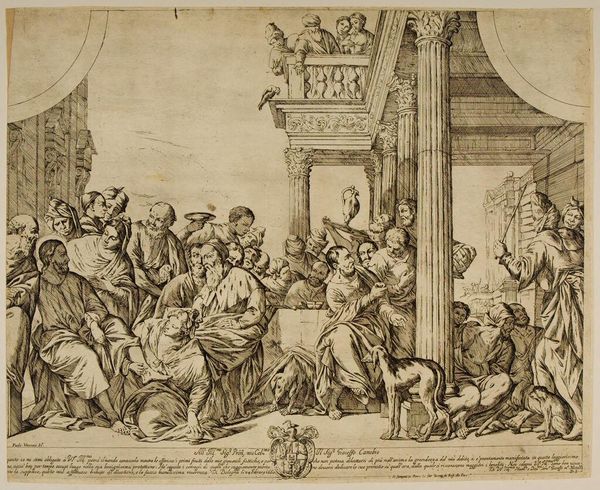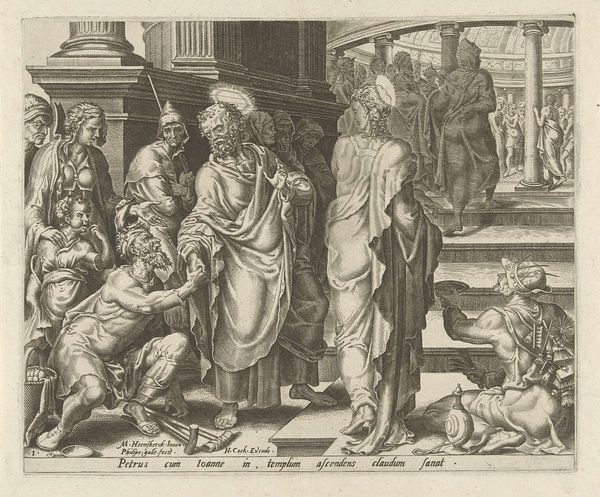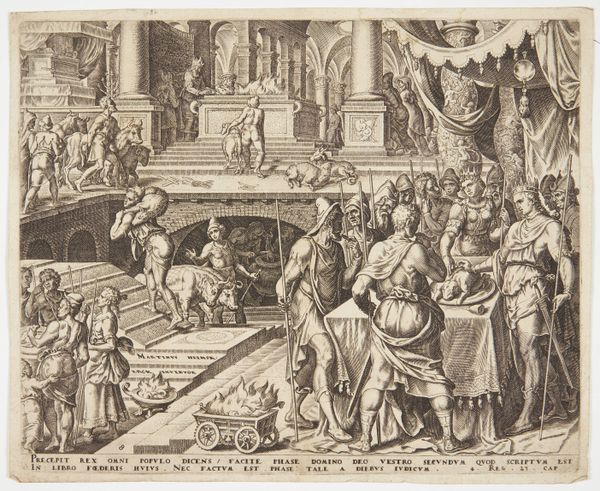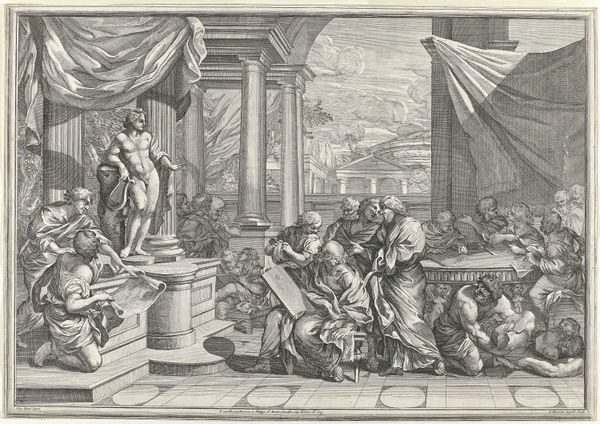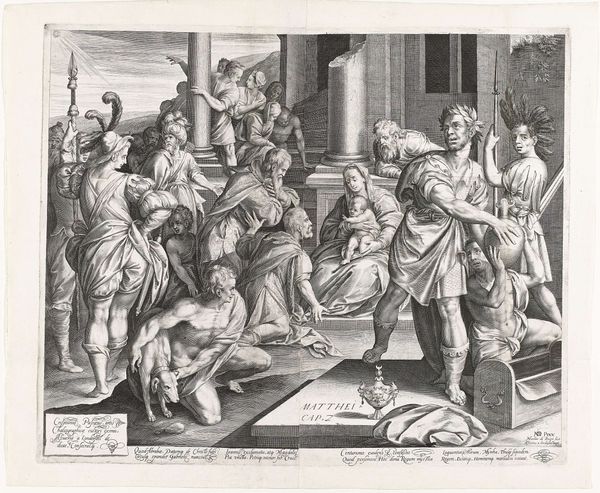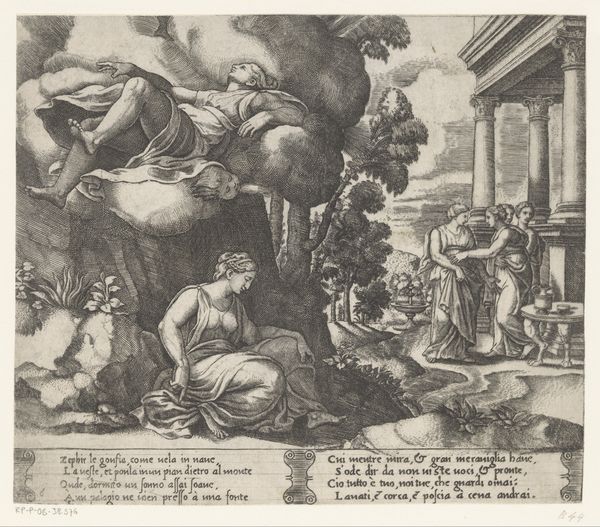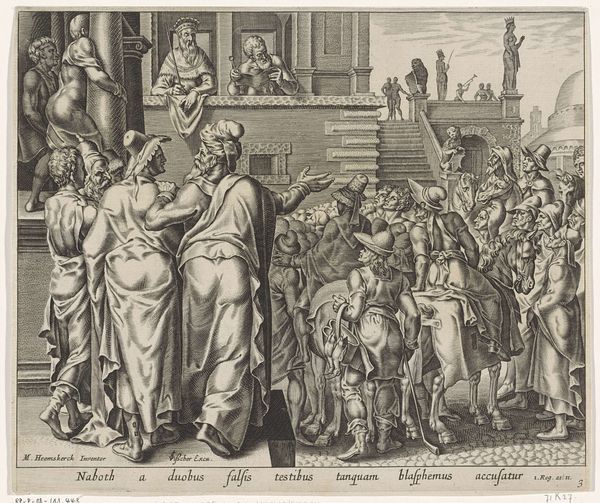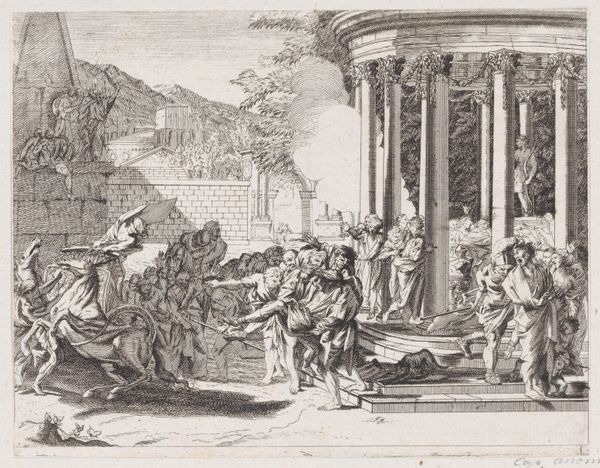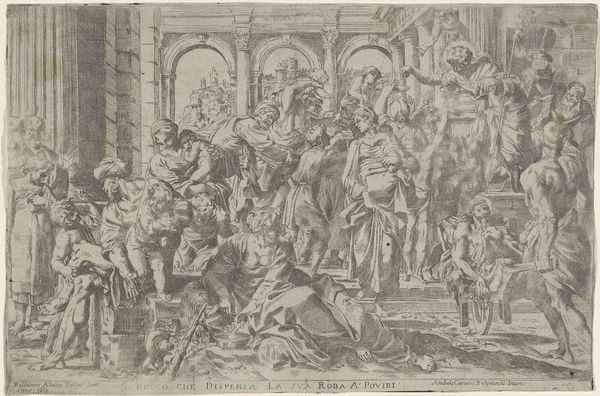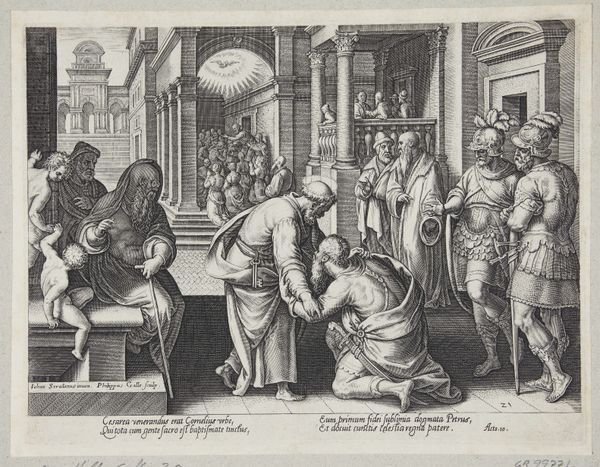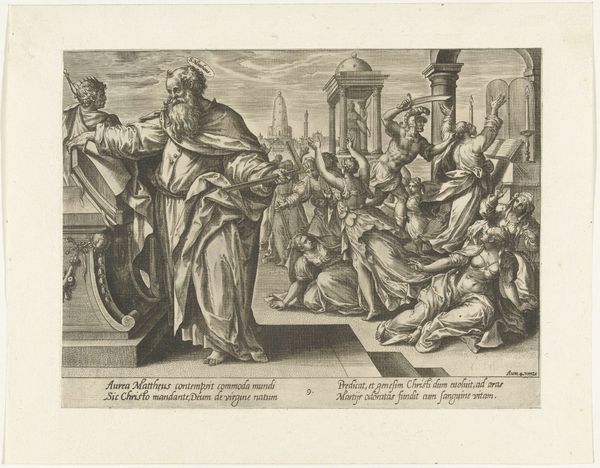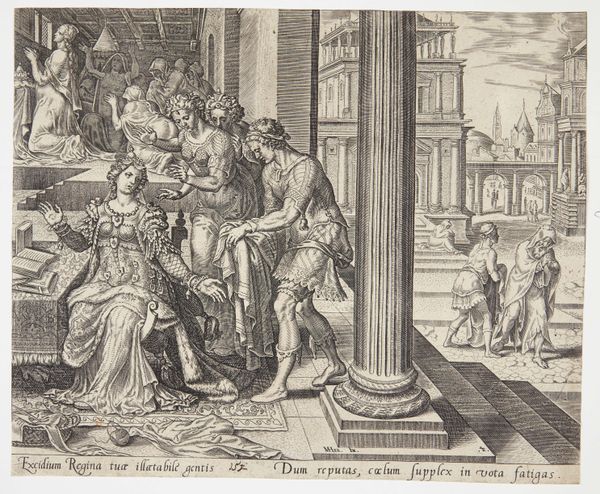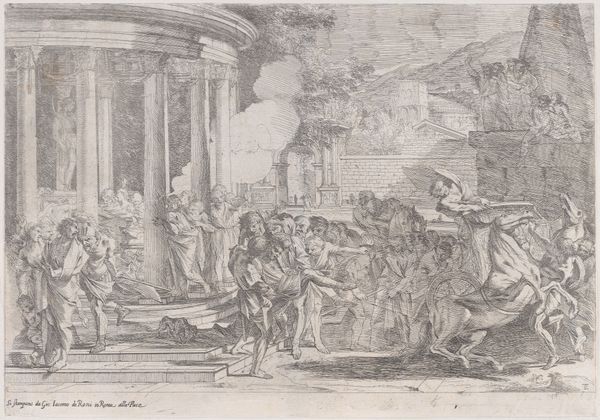
print, engraving
#
allegory
#
baroque
# print
#
pencil sketch
#
old engraving style
#
history-painting
#
engraving
Dimensions: height 299 mm, width 381 mm
Copyright: Rijks Museum: Open Domain
Giacomo Barri created this print, "Keizer Augustus en de Tiburtijnse Sibille," using etching, a process that allows for intricate detail and tonal variation. The etching process involves coating a metal plate with wax, then drawing through the wax to expose the metal. Acid is then applied, biting into the exposed areas to create lines. Ink is applied to the plate, and then the surface is wiped clean, leaving ink only in the etched lines. Finally, the plate is pressed onto paper, transferring the image. Barri's skill is evident in the delicate lines and shading. The level of detail speaks to the labor involved. Through the medium of etching, Barri captures the textures of the fabrics, the architecture, and the expressive faces of the figures. The contrast between light and shadow adds depth and drama, making the scene come alive. Considering the time-consuming process of etching, it’s clear that Barri was deeply engaged with his materials and methods, pushing the boundaries of printmaking as a fine art.
Comments
No comments
Be the first to comment and join the conversation on the ultimate creative platform.
